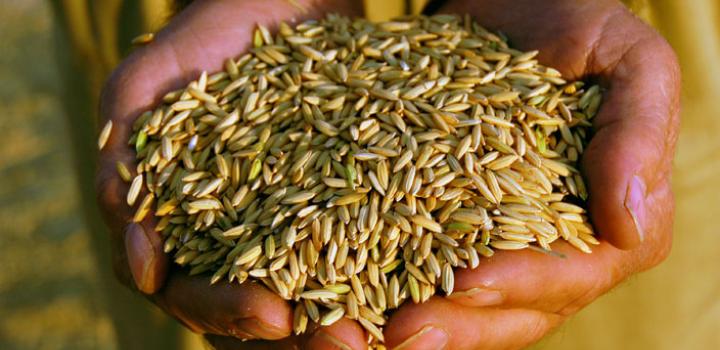India’s banned rice exports could bolster prices for U.S. growers
by August 2, 2023 12:38 pm 696 views

A ban on white, non-basmati rice exports by India could bolster prices for American rice farmers, said Alvaro Durand-Morat, associate professor and agricultural economist for the University of Arkansas System Division of Agriculture.
India enacted the export ban on non-basmati white rice on July 20.
“India has been consistently the largest exporter of rice for the last decade or so” averaging more than 21 million metric tons, or 40% of global rice exports in the last two marketing years, Durand-Morat said. “And this particular category represents 7 million metric tons of rice exported annually. We are talking about a very large amount of rice that will not be coming to the market potentially,” he said, adding that there is no single rice-growing country that can step into the export vacuum left by India’s ban.
Durand-Morat, who has spent a large part of his career analyzing the world’s rice markets, sees the ban reverberating through the Americas — both the U.S. and countries of MERCOSUR, the Southern Common Market trade bloc comprised of Argentina, Brazil, Paraguay and Uruguay.
“I expect this change in India will affect MERCOSUR and the U.S. prices in the same way,” he said. While prices may be softer at first due to larger rice acreage in the U.S., eventually as the decrease in Indian exports is felt, “this will all give more support to rice prices.”
According to the Creed Rice Market report, export quotes for Indian rice rose from $355 per ton a year ago to $495 per ton in mid-July.
Arkansas is the leading rice producer in the U.S., growing roughly half of the nation’s crop each year.
The USDA’s Natural Agricultural Statistical Service (NASS) projects that about 1.311 million acres of the crop have been planted in Arkansas in 2023. That’s nearly 200,000 more acres than were planted in 2022. Nationally, about 2.687 million acres have been planted, a nearly 400,000-acre uptick since the last growing season.
Durand-Morat said the Indian government’s action was driven by concerns “for the food security situation of the population there and also concerns about potential weather events that may actually result in lower production.”
The expectation this year is that the El Niño weather pattern will bring lower-than-average rains to India. Although it hasn’t been severe, Durand-Morat said there are concerns.
“With such a huge population, I’m pretty sure the government doesn’t want to take any chances,” he said.
India’s population in 2021 was estimated at 1.4 billion.
In 2022, India was forecast to see its first decline in rice production since the 2015-16 marketing year, according to the Foreign Agricultural Service of the U.S. Department of Agriculture. Parts of India saw below-normal rainfall in 2022, followed by floods.
Durand-Morat said India’s rice reaches more than 150 countries, “but there are regions in the world that are expected to be particularly affected and those are primarily the developing countries such as Madagascar and Benin that depend on Indian rice for their food security.”
India has said it is “willing to accommodate any demand from importing countries because they don’t want to worsen the food security of those countries, but it is definitely ‘our food security first, everybody else, second’,” he said.
India hasn’t always been a power player in the rice market. Durand-Morat said rice exports had been a marginal activity in India, meaning the country generally exported leftover rice.
“If there are leftovers, they export it. If not, they don’t,” he said.
“Over the last 10 years, they have been blessed with incredible weather and they managed to increase production to levels that we honestly never expected 10 years ago,” Durand-Morat said.
“Everything had been going so well, you kind of get optimistic,” he said. “But as soon as the concerns about a potential El Niño came up last year, the government didn’t think twice about taking drastic actions to support domestic food security.”
